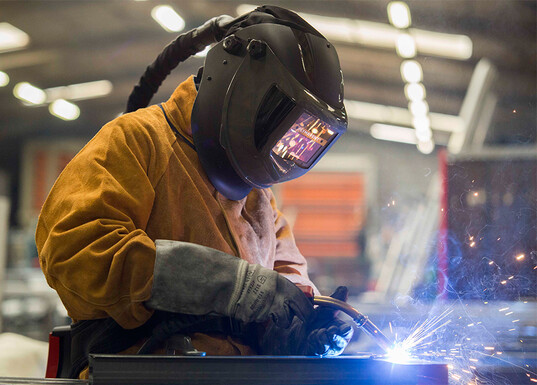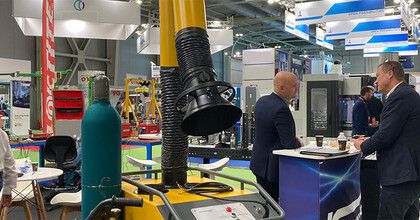Metal fume fever is a benign, self-limiting occupational respiratory disease that results from the inhalation of fine metal particles. Whilst the exact mechanism for this condition is not known, the primary cause is thought to relate to the inhalation of zinc oxide fumes produced when zinc-coated steel or zinc-containing alloys (e.g. brass) are heated to high temperatures. A variety of other names for this condition is used, such as copper fever, brazier’s disease, welder’s ague, foundry fever, brass chills and spelter shakes.
Welders are commonly exposed to substances from the base metal, plating or filler that cause metal fume fever. Brazing and soldering can also cause metal poisoning due to exposure to lead, zinc, copper or cadmium. In extreme cases, cadmium (present in some older silver solder alloys) can cause loss of consciousness.
Signs and symptoms
The signs and symptoms are generally flu-like, such as chills, myalgia, chest pain, non-productive cough, metallic taste in the mouth, leukocytosis, headache, fatigue and malaise. A sweet or metallic taste in the mouth may also be reported, along with a dry or irritated throat which may lead to hoarseness. Symptoms of a more severe metal toxicity may also include a burning sensation in the body, shock, no urine output, collapse, convulsions, shortness of breath, yellow eyes or yellow skin, rash, vomiting, watery or bloody diarrhea or low or high blood pressure, which require prompt medical attention. Flu-like symptoms normally disappear within 24 to 48 hours. Full recovery often requires one to three weeks.
How is it diagnosed?
This is one of the difficult parts, because symptoms vary from person to person. Sometimes the white blood cell count goes down and, in some cases, the zinc content is increased in urine and blood.
The symptoms also resemble other normal diseases which increases the difficulty to make a diagnosis through normal physical examination. It is therefore important to verify the patient’s history in the environment of metal oxide, work history, job nature, etc.
Prevention
The best way to prevent metal fume fever is to follow these guidelines:
- PPE (Personal Protection Equipment): Complete implementation of international standards and safety codes for the workforce, including oxygen inhalers and a ventilation system. New helmets are available on the market with advance respiratory features to keep fumes away from welding personnel. Read our guide about the Auto-darkening welding helmet.
- Advance Training: Training workers is essential. They should be educated properly regarding the reactive nature of chemicals and the extra care they have to take while working in a particular metallic environment.
- Chemical Examination Report: Mostly, companies do not have a pre-chemical analysis report made before deploying the welding team or in case of customised work, the workers are not given any information regarding the chemical content present in the metals which eventually may lead to illness. Serious issues such as cadmium oxide can easily be avoided through a predetermination of the chemical content.
- Ventilation: During welding, ventilation is the best way to remove hazardous fumes or oxides from the air. Fume particles are smaller than dust and don’t settle easily; to clear the space from their contamination with the breathing air, a mechanised ventilation system should be installed.
Source:








